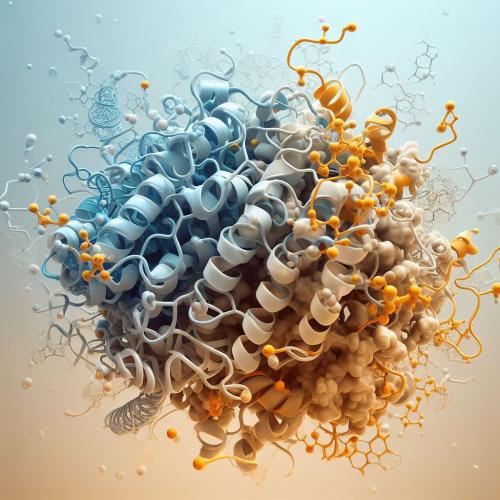
GROMACS Tips and Tricks: How to Analyze the Hydrogen Bonding Network in Molecular Dynamics Simulations
Hydrogen bonds are important interactions that stabilize the structure and function of biomolecules. They also play a key role in mediating the solvation and dynamics of biomolecules in aqueous environments
. Therefore, analyzing the hydrogen bonding network in molecular dynamics (MD) simulations can provide valuable insights into the behavior and properties of biological systems. In this post, I will show you how to use GROMACS, a popular software for performing and analyzing MD simulations, to calculate and visualize the hydrogen bonding network in your system. I will use a simple example of a protein-ligand complex in water, but you can apply the same methods to any system of interest.
The steps are as follows:
- Step 1: Define the hydrogen bond donors and acceptors. You need to specify which atoms in your system can act as hydrogen bond donors and acceptors. This can be done by editing the specbond.dat file in the GROMACS data directory. For example, if you want to include the hydroxyl group of the ligand as a donor and acceptor, you can add a line like this:
LIG OH 1 LIG OH 1 0.35 180
This means that the atom named OH in the residue named LIG can form a hydrogen bond with another atom named OH in the same residue, with a distance cutoff of 0.35 nm and an angle cutoff of 180 degrees. You can add as many lines as you need for your system, following the format:
resname1 atomname1 resnum1 resname2 atomname2 resnum2 dist angle
- Step 2: Run the hydrogen bond analysis tool. You can use the gmx hbond command to calculate the number, lifetime, and distance-angle distribution of hydrogen bonds in your system. You need to provide the input trajectory file (-f), the topology file (-s), and the output file prefix (-o). You can also use various options to customize the analysis, such as the -a and -r options to set the angle and distance cutoffs, the -n option to provide an index file with specific groups of atoms, and the -hbn and -hbm options to generate output files for visualization. For example, the command can look something like this:
gmx hbond -f traj.xtc -s topol.tpr -o hbond -a 30 -r 0.35 -n index.ndx -hbn hbond.ndx -hbm hbond.xpm
This will calculate the hydrogen bonds using a 30-degree angle cutoff and a 0.35 nm distance cutoff, and generate an index file (hbond.ndx) and a matrix file (hbond.xpm) for visualization.
- Step 3: Visualize the hydrogen bonding network. You can use the index file and the matrix file from the previous step to visualize the hydrogen bonding network in your system. For example, you can use the gmx make_ndx command to create a new index file that contains only the hydrogen bond donor and acceptor atoms, and then use the gmx trjconv command to create a new trajectory file that contains only those atoms. You can also use the -n option to select a specific group of atoms, such as the protein, the ligand, or the water. For example, the commands can look something like this:
gmx make_ndx -f topol.tpr -o hbond_atom.ndx -n hbond.ndx
gmx trjconv -f traj.xtc -s topol.tpr -o hbond_atom.xtc -n hbond_atom.ndx
Then, you can use a visualization software, such as VMD, to load the new trajectory file and the matrix file.
Pars Silico Molecular Dynamics Simulation Services
Experience the power of simulation with our molecular dynamics services at molecular dynamics simulation services at Pars Silico Bioinformatics Laboratory. Our advanced computational techniques allow you to observe and analyze molecular interactions in unprecedented detail.
Tags: GROMACS, Molecular dynamics








